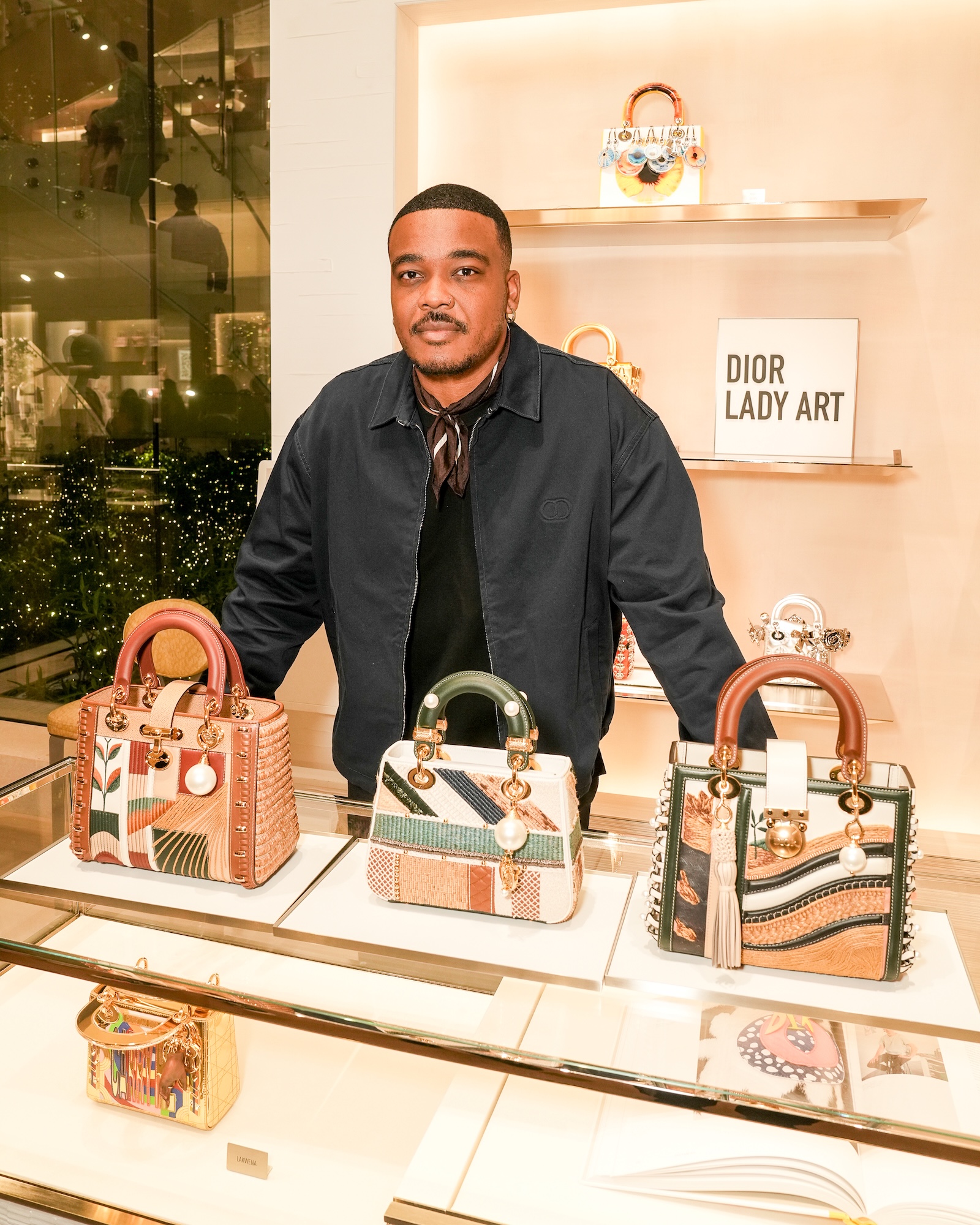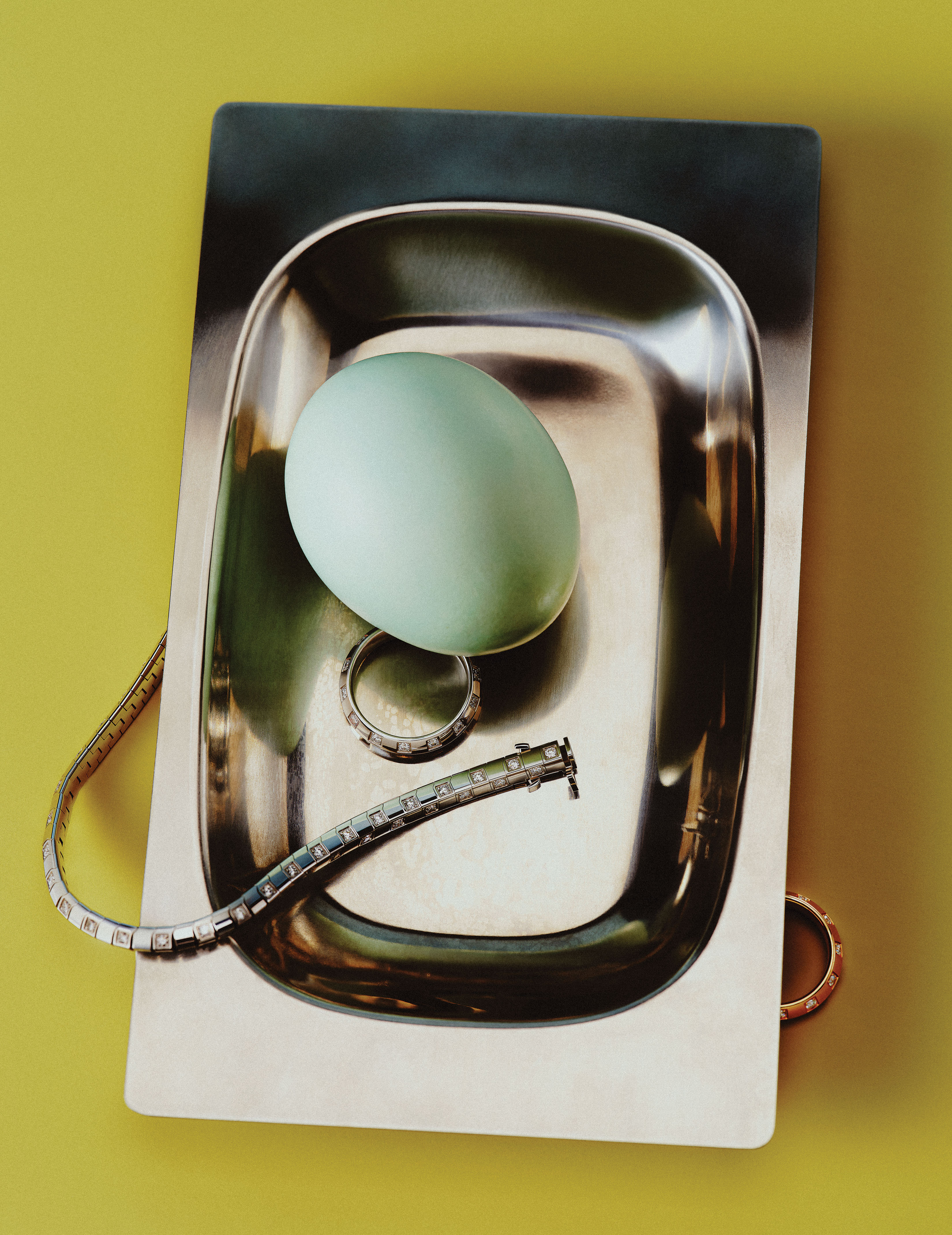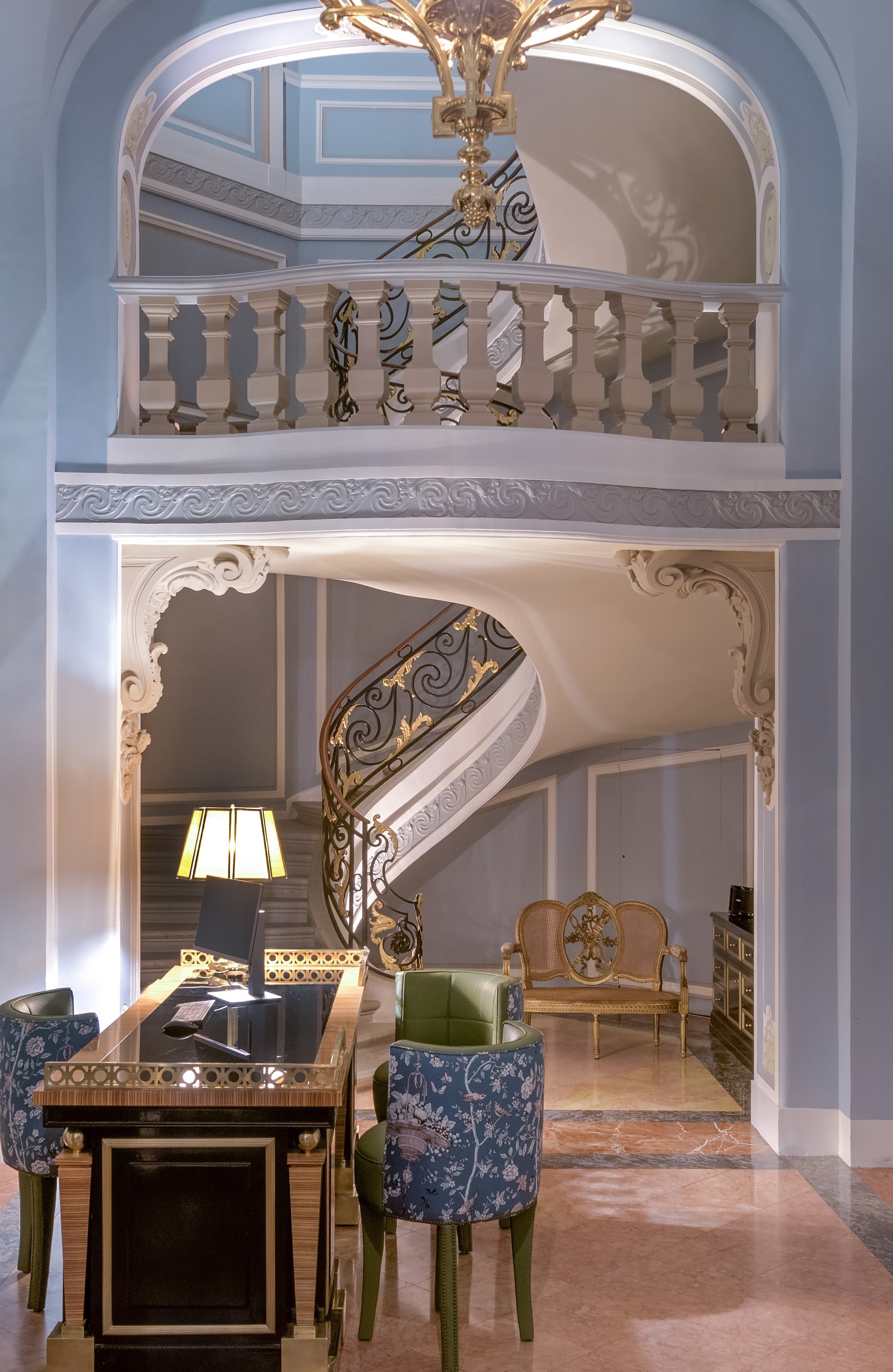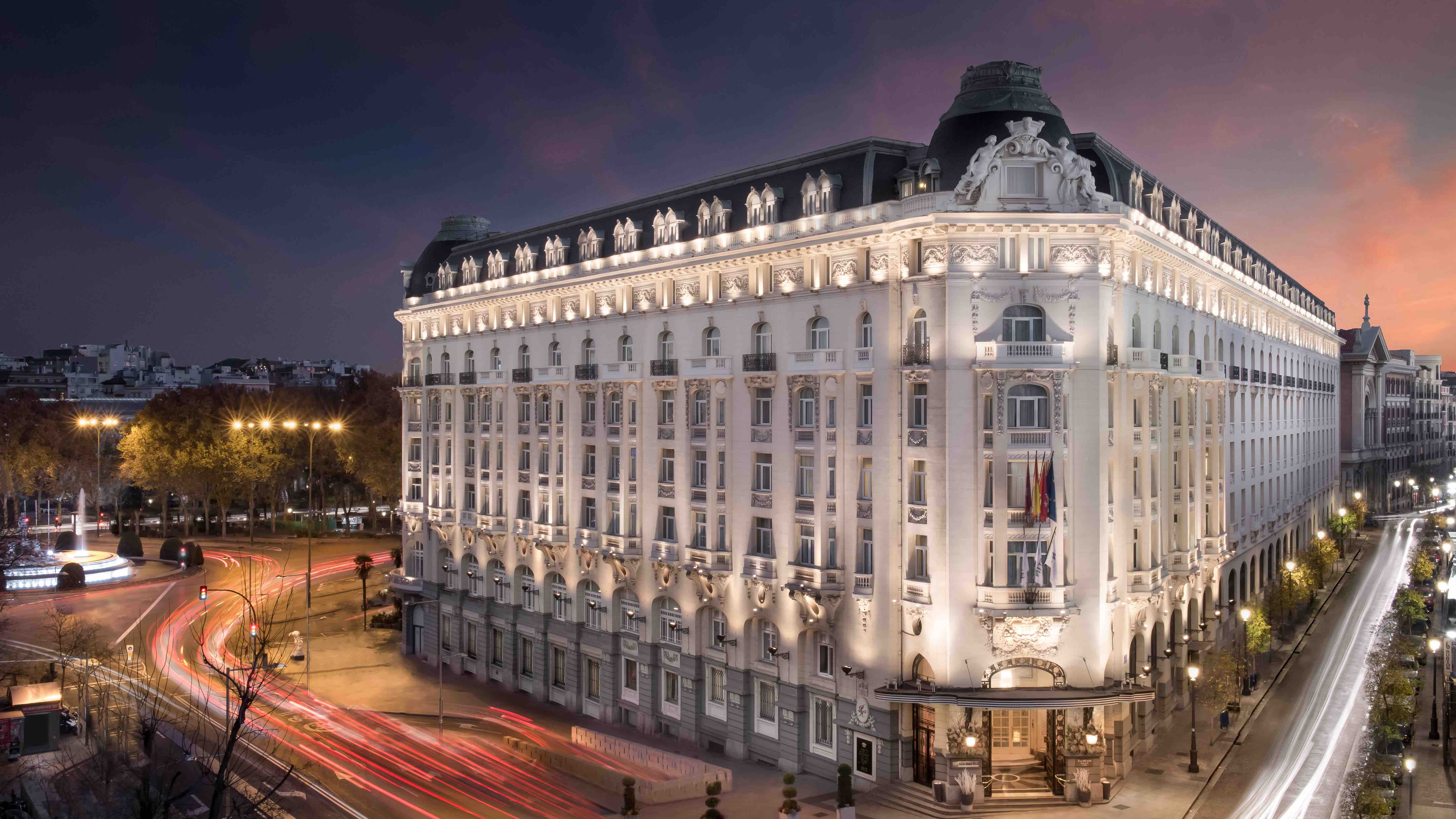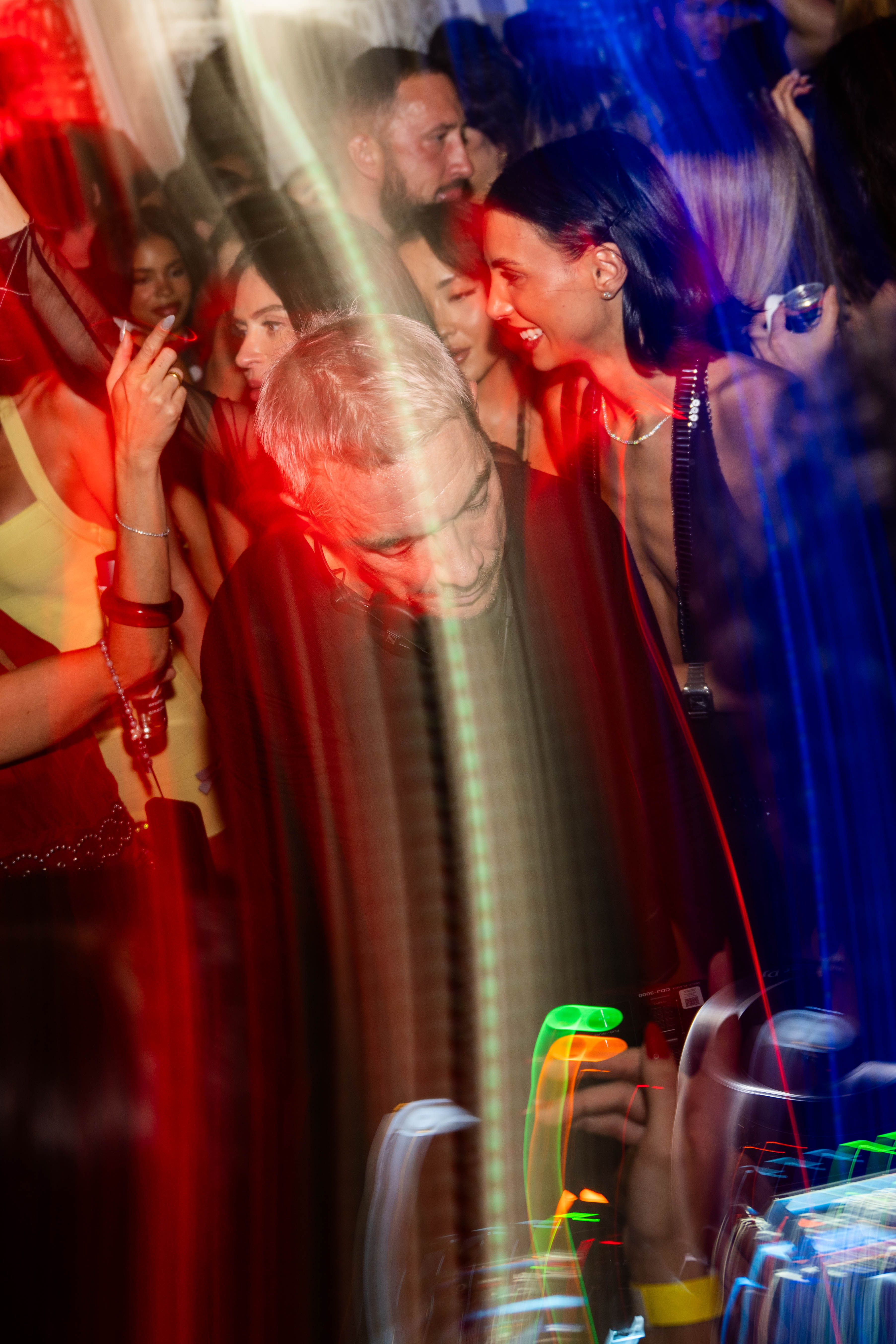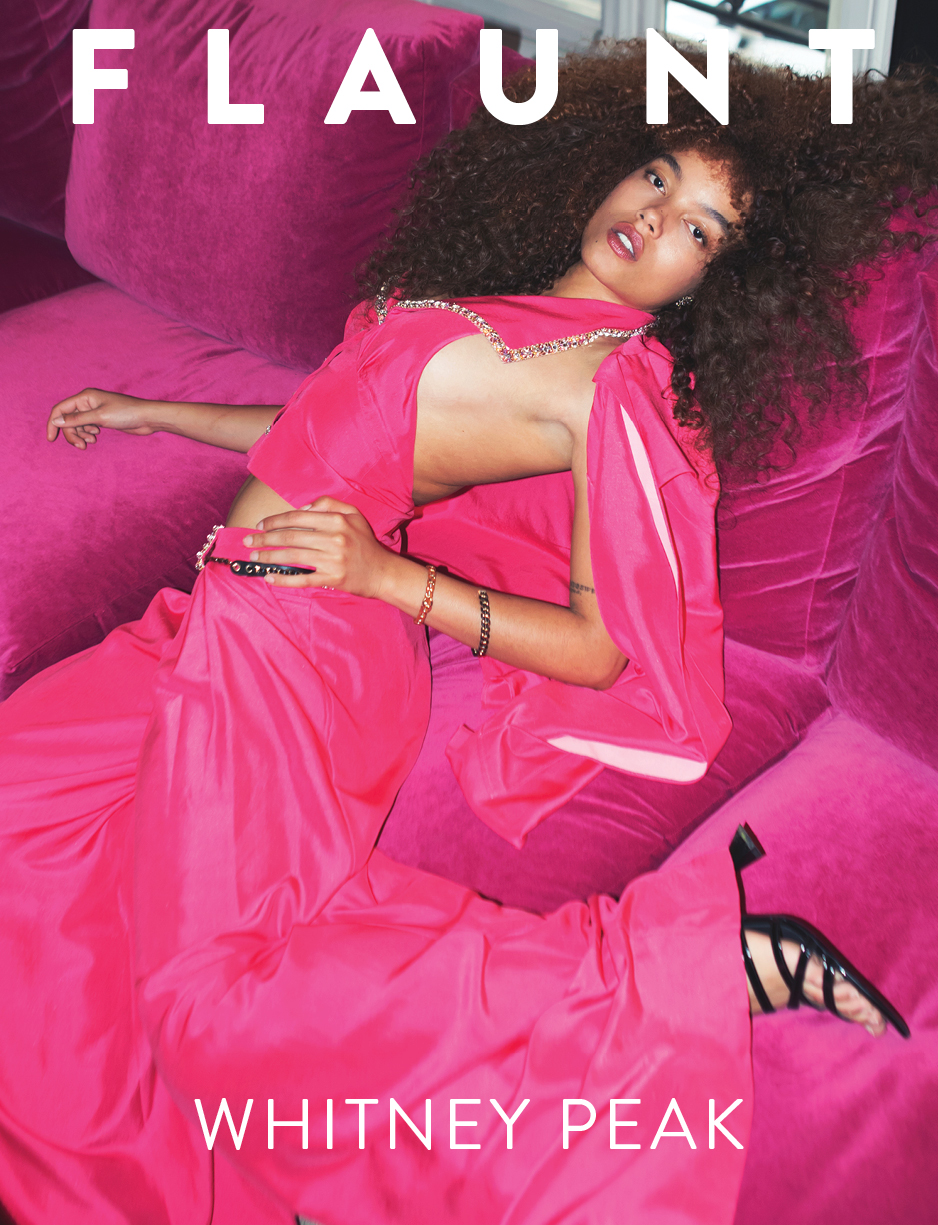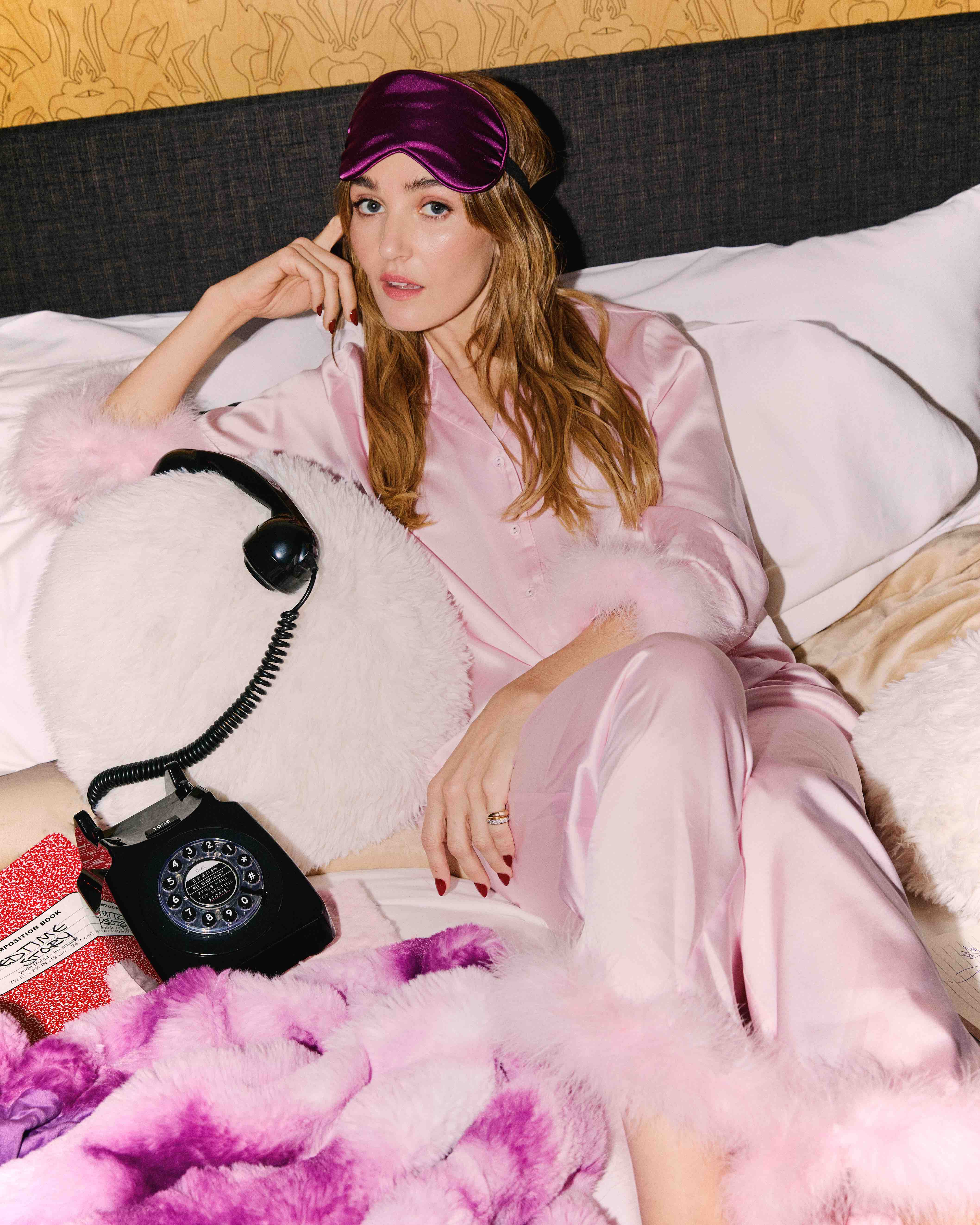

Martin Schoeller - Kwame Ajamu, 2019, video and sound installation, total running time 16:31 minutes. © Martin Schoeller
Photographer Martin Schoeller takes a stand on the United States justice system in his newest exhibition, _Death Row Exonerees_. The exhibition opened August 28th, 2020 and will be on view until January 10th, 2021 at Fotografiska in New York. This groundbreaking exhibition is an examination of the justice system and the practice of the death penalty, critiquing its systematic faults and inhumanity. Schoeller partnered with Witness To Innocence to show ten video portraits of individuals who faced a death row sentence for a crime they did not commit. Check out the interview with Martin about this innovative, conversation-starting exhibition.
* * *
**What was it like to break into the art world?**
Yeah, well I think photography can be art but not all photography is art, I've always hoped that my close up series has a life beyond the world of magazine publishing. I've had a lot of successful shows in galleries and museums over the years so this wasn't completely new territory for me. Doing this video installation was a new endeavor that I greatly enjoyed. It all stemmed from the idea that I felt strongly about doing something on the subject matter of the death penalty. I'm very adamant against it. I decided to do a body of work that deals with the subject matter, and hopefully it would change people's minds and hearts regarding the death penalty.
**What is the process of putting together an exhibition like?**
I think every time it's a little bit different. In this case I basically found this organization, I tried to contact them, and they weren't very open in the beginning to me working with them. So I offered to work for free and to basically promote their organization. They didn't really like my photography that much, my portraits looked a little bit too much like mugshots, and it took me about a year to convince them otherwise. I had lunch with the director of the organization, and he pretty much straightforward told me that he thinks that everyone looks bad in my photographs. I showed him my book, and after flipping through and looking through my book, he said "Well.. maybe people look the way they look, they don't look bad per say," and he said "Oh \[your photos\] actually have a lot of humanity to them, they're not cold and mean" and then in the end he said "you know what, i'm going to be your first subject." I went back to Philadelphia and photographed him. He liked the experience and recommended the other exonerees that were a part of the organization. That's how this came about.
I was then invited to go to one of their meetings. They have an annual meeting every year in the state where one of the exonerees is from. I went to Puerto Rico—where the annual meeting was—and photographed 15 of the exonerees in Puerto Rico in a hotel room, and with that material, I put the video together.
**Has the pandemic affected the way you create art?**
Oh yeah, a lot! Basically the first five months I had no jobs, starting in March, all of my jobs were cancelled, so I found myself working the archive. I actually continued this series _Death Row Exonerees_. The organization Witness to Innocence received a grant to create some content for the organization, and they called me up and said, "Martin, you know we really want to give you the grant money for you to create more videos for our organization," different from my video installation and more traditional video. And I said okay, I can't take any of your money. I'm happy to do it, but I will not take a penny of your money. You guys can pay for a cameraman and then editing and the expenses. So I rented an RV and visited 10 exonerees at home all throughout the country, and I traveled in an RV as COVID-free as I can. I didn’t have to get on a plane and didn’t stay in a hotel. Generally when I do a shoot now, we all keep a very small crew, basically my assistant and I and the person we're photographing. I get tested a lot and I'm overall really careful with who I hang out with and meet most friends outside in the restaurant or in the park.
**How did you come up with _Death Row Exonerees_ and what is the message it is meant to send out?**
Out of the fifteen exonerees that I worked with, I picked those ten because I felt they made for a very different story and had people from different backgrounds. I always felt that the regular video the talking heads is kind of a boring format. You just end up reading lips and trying to read their lips while they're talking. I wanted to create something that was uncomfortable, like these people have gone through these tremendous experiences, horrific experiences being incarcerated for often decades for crimes they didn't commit. Derrick Jamison for example, he was on death row for 20 years. He had six days of executions, and every time he got a stay from the government last minute and was granted the stay, so he could have been killed six times.
It's just like incredibly horrific, and seeing the other people you were in prison with getting killed one by one. I wanted to do something that emotionally connects to their experiences, to find a language that makes the viewer uncomfortable and kinda takes them to where they had these experiences. So I thought if I created a really dark room, you can get kind of lost and confused in a dark environment. Then to add the audio, and the faces be disconnected, so as you're looking at the faces, they're barely moving and you have a message of these faces straight on and you hear their voices and their voice tells a different story. So you have two different stories taking place at the same time, while again it is an uncomfortable situation. I wanted to showcase what I learned and experienced in interviewing and getting to know these death row survivors.


Martin Schoeller - Gary Drinkhard, 2019, video and sound installation, total running time 16:31 minutes. © Martin Schoeller
**What is the importance of highlighting topics such as prison reform, immigration, the LGBTQ+ community, and recent protest movements in the art world?**
Well I think generally as a society you have to look at the shortcomings and celebrate what a society is good at. I think as someone who was born in this country and living in it for 25 years, there's a lot of great things in the United States and there's a lot of things to be proud of. We should celebrate those things and look at the things that need improvement to have a better society going forward. The prison system, especially the death penalty, is something that needs to be improved upon.
**How was working with Witness to Innocence and what was it like to engage with the people you photographed?**
Some of the people I have photographed have become my friends, it was very emotional. I knew it would be hard to listen to their stories but I underestimated how much it would personally shake me up. I interviewed fifteen of them over the span of three or four days. I interviewed each person for at least an hour, I would say some were two hours. Some of the days I just did eight hours of interviews and a social worker who was a part of Witness to Innocence saw me one day and said, "Martin, I think you need to take a break, you don't look so good." She could tell how emotionally affected I was, and my whole demeanor and my body language had changed. It's hard to fathom what these people went through living in prison. Being a mail carrier one day and the next day you're on death row, accused of killing somebody, and everyone calls you a monster and a murderer, and you end up on death row for the next five years. It's hard to imagine what these people have gone through.
**Your style of photography usually consists of close-up, portrait-style photography, what compelled you to shoot pictures this way?**
I just went through some old pictures of mine and I found these photoshoots of homeless people I photographed when I went to photography school in Berlin in 1989. So from around thirty-one years ago, I photographed homeless people in Berlin and I took them really close up. Even back then it wasn't as much of a conscious effort as maybe it's just something ingrained in myself. I was always drawn into coming close, it also might come from this idea of why not focus in on the most important part of a person. If you back up, you see the torso which is just made up of a t-shirt or a jacket, but it doesn't really state as much about a person. Maybe it's a very interesting material, then it does say something, but oftentimes it doesn't really add anything to the picture. If you go even further away you see the whole body and the legs and maybe they have an interesting body language or maybe it's a dancer and they have this beautiful pose, but oftentimes the face gets so small that you have a hard time connecting to it. So why not make it all about the most essential part? I would say I'm the opposite of a fashion photographer. For me it's all about the person and very little about the clothes.
**When do you feel most invincible with your art?**
I always feel very much emotionally connected and raw and I don't think I ever feel invincible, quite the contrary. My work is sometimes shown and criticized and commented upon and people like it or hate it and yeah, sometimes I question myself. Invincible is not the right word.
**What do you hope to accomplish in the near future? Any goals or aspirations?**
I think it's going to happen sooner than later. Kwame Ajamu, who is apart of this series, says in the next five years the death penalty will be abolished. I hope he is right. Yeah, my work has shifted. I used to work so much for magazines, and now magazines are struggling so much and there are so many young and new photographers that magazines hire that I don't work that much for magazines anymore. So now I do more advertising campaigns, and then that enables me to keep doing my personal projects. _Death Row Exonerees_ is one of them. I finished a series on holocaust survivors before, I'm working on a series about drag queens to make my life not as sad and a little light hearted subject matter. It's shifted a little, but I still love being a photographer. I think that's all that matters. Telling stories, documenting people in our time.
 
Martin Schoeller - Kwame Ajamu, 2019, video and sound installation, total running time 16:31 minutes. © Martin Schoeller
Photographer Martin Schoeller takes a stand on the United States justice system in his newest exhibition, _Death Row Exonerees_. The exhibition opened August 28th, 2020 and will be on view until January 10th, 2021 at Fotografiska in New York. This groundbreaking exhibition is an examination of the justice system and the practice of the death penalty, critiquing its systematic faults and inhumanity. Schoeller partnered with Witness To Innocence to show ten video portraits of individuals who faced a death row sentence for a crime they did not commit. Check out the interview with Martin about this innovative, conversation-starting exhibition.
* * *
**What was it like to break into the art world?**
Yeah, well I think photography can be art but not all photography is art, I've always hoped that my close up series has a life beyond the world of magazine publishing. I've had a lot of successful shows in galleries and museums over the years so this wasn't completely new territory for me. Doing this video installation was a new endeavor that I greatly enjoyed. It all stemmed from the idea that I felt strongly about doing something on the subject matter of the death penalty. I'm very adamant against it. I decided to do a body of work that deals with the subject matter, and hopefully it would change people's minds and hearts regarding the death penalty.
**What is the process of putting together an exhibition like?**
I think every time it's a little bit different. In this case I basically found this organization, I tried to contact them, and they weren't very open in the beginning to me working with them. So I offered to work for free and to basically promote their organization. They didn't really like my photography that much, my portraits looked a little bit too much like mugshots, and it took me about a year to convince them otherwise. I had lunch with the director of the organization, and he pretty much straightforward told me that he thinks that everyone looks bad in my photographs. I showed him my book, and after flipping through and looking through my book, he said "Well.. maybe people look the way they look, they don't look bad per say," and he said "Oh \[your photos\] actually have a lot of humanity to them, they're not cold and mean" and then in the end he said "you know what, i'm going to be your first subject." I went back to Philadelphia and photographed him. He liked the experience and recommended the other exonerees that were a part of the organization. That's how this came about.
I was then invited to go to one of their meetings. They have an annual meeting every year in the state where one of the exonerees is from. I went to Puerto Rico—where the annual meeting was—and photographed 15 of the exonerees in Puerto Rico in a hotel room, and with that material, I put the video together.
**Has the pandemic affected the way you create art?**
Oh yeah, a lot! Basically the first five months I had no jobs, starting in March, all of my jobs were cancelled, so I found myself working the archive. I actually continued this series _Death Row Exonerees_. The organization Witness to Innocence received a grant to create some content for the organization, and they called me up and said, "Martin, you know we really want to give you the grant money for you to create more videos for our organization," different from my video installation and more traditional video. And I said okay, I can't take any of your money. I'm happy to do it, but I will not take a penny of your money. You guys can pay for a cameraman and then editing and the expenses. So I rented an RV and visited 10 exonerees at home all throughout the country, and I traveled in an RV as COVID-free as I can. I didn’t have to get on a plane and didn’t stay in a hotel. Generally when I do a shoot now, we all keep a very small crew, basically my assistant and I and the person we're photographing. I get tested a lot and I'm overall really careful with who I hang out with and meet most friends outside in the restaurant or in the park.
**How did you come up with _Death Row Exonerees_ and what is the message it is meant to send out?**
Out of the fifteen exonerees that I worked with, I picked those ten because I felt they made for a very different story and had people from different backgrounds. I always felt that the regular video the talking heads is kind of a boring format. You just end up reading lips and trying to read their lips while they're talking. I wanted to create something that was uncomfortable, like these people have gone through these tremendous experiences, horrific experiences being incarcerated for often decades for crimes they didn't commit. Derrick Jamison for example, he was on death row for 20 years. He had six days of executions, and every time he got a stay from the government last minute and was granted the stay, so he could have been killed six times.
It's just like incredibly horrific, and seeing the other people you were in prison with getting killed one by one. I wanted to do something that emotionally connects to their experiences, to find a language that makes the viewer uncomfortable and kinda takes them to where they had these experiences. So I thought if I created a really dark room, you can get kind of lost and confused in a dark environment. Then to add the audio, and the faces be disconnected, so as you're looking at the faces, they're barely moving and you have a message of these faces straight on and you hear their voices and their voice tells a different story. So you have two different stories taking place at the same time, while again it is an uncomfortable situation. I wanted to showcase what I learned and experienced in interviewing and getting to know these death row survivors.

Martin Schoeller - Kwame Ajamu, 2019, video and sound installation, total running time 16:31 minutes. © Martin Schoeller
Photographer Martin Schoeller takes a stand on the United States justice system in his newest exhibition, _Death Row Exonerees_. The exhibition opened August 28th, 2020 and will be on view until January 10th, 2021 at Fotografiska in New York. This groundbreaking exhibition is an examination of the justice system and the practice of the death penalty, critiquing its systematic faults and inhumanity. Schoeller partnered with Witness To Innocence to show ten video portraits of individuals who faced a death row sentence for a crime they did not commit. Check out the interview with Martin about this innovative, conversation-starting exhibition.
* * *
**What was it like to break into the art world?**
Yeah, well I think photography can be art but not all photography is art, I've always hoped that my close up series has a life beyond the world of magazine publishing. I've had a lot of successful shows in galleries and museums over the years so this wasn't completely new territory for me. Doing this video installation was a new endeavor that I greatly enjoyed. It all stemmed from the idea that I felt strongly about doing something on the subject matter of the death penalty. I'm very adamant against it. I decided to do a body of work that deals with the subject matter, and hopefully it would change people's minds and hearts regarding the death penalty.
**What is the process of putting together an exhibition like?**
I think every time it's a little bit different. In this case I basically found this organization, I tried to contact them, and they weren't very open in the beginning to me working with them. So I offered to work for free and to basically promote their organization. They didn't really like my photography that much, my portraits looked a little bit too much like mugshots, and it took me about a year to convince them otherwise. I had lunch with the director of the organization, and he pretty much straightforward told me that he thinks that everyone looks bad in my photographs. I showed him my book, and after flipping through and looking through my book, he said "Well.. maybe people look the way they look, they don't look bad per say," and he said "Oh \[your photos\] actually have a lot of humanity to them, they're not cold and mean" and then in the end he said "you know what, i'm going to be your first subject." I went back to Philadelphia and photographed him. He liked the experience and recommended the other exonerees that were a part of the organization. That's how this came about.
I was then invited to go to one of their meetings. They have an annual meeting every year in the state where one of the exonerees is from. I went to Puerto Rico—where the annual meeting was—and photographed 15 of the exonerees in Puerto Rico in a hotel room, and with that material, I put the video together.
**Has the pandemic affected the way you create art?**
Oh yeah, a lot! Basically the first five months I had no jobs, starting in March, all of my jobs were cancelled, so I found myself working the archive. I actually continued this series _Death Row Exonerees_. The organization Witness to Innocence received a grant to create some content for the organization, and they called me up and said, "Martin, you know we really want to give you the grant money for you to create more videos for our organization," different from my video installation and more traditional video. And I said okay, I can't take any of your money. I'm happy to do it, but I will not take a penny of your money. You guys can pay for a cameraman and then editing and the expenses. So I rented an RV and visited 10 exonerees at home all throughout the country, and I traveled in an RV as COVID-free as I can. I didn’t have to get on a plane and didn’t stay in a hotel. Generally when I do a shoot now, we all keep a very small crew, basically my assistant and I and the person we're photographing. I get tested a lot and I'm overall really careful with who I hang out with and meet most friends outside in the restaurant or in the park.
**How did you come up with _Death Row Exonerees_ and what is the message it is meant to send out?**
Out of the fifteen exonerees that I worked with, I picked those ten because I felt they made for a very different story and had people from different backgrounds. I always felt that the regular video the talking heads is kind of a boring format. You just end up reading lips and trying to read their lips while they're talking. I wanted to create something that was uncomfortable, like these people have gone through these tremendous experiences, horrific experiences being incarcerated for often decades for crimes they didn't commit. Derrick Jamison for example, he was on death row for 20 years. He had six days of executions, and every time he got a stay from the government last minute and was granted the stay, so he could have been killed six times.
It's just like incredibly horrific, and seeing the other people you were in prison with getting killed one by one. I wanted to do something that emotionally connects to their experiences, to find a language that makes the viewer uncomfortable and kinda takes them to where they had these experiences. So I thought if I created a really dark room, you can get kind of lost and confused in a dark environment. Then to add the audio, and the faces be disconnected, so as you're looking at the faces, they're barely moving and you have a message of these faces straight on and you hear their voices and their voice tells a different story. So you have two different stories taking place at the same time, while again it is an uncomfortable situation. I wanted to showcase what I learned and experienced in interviewing and getting to know these death row survivors.
 
Martin Schoeller - Gary Drinkhard, 2019, video and sound installation, total running time 16:31 minutes. © Martin Schoeller
**What is the importance of highlighting topics such as prison reform, immigration, the LGBTQ+ community, and recent protest movements in the art world?**
Well I think generally as a society you have to look at the shortcomings and celebrate what a society is good at. I think as someone who was born in this country and living in it for 25 years, there's a lot of great things in the United States and there's a lot of things to be proud of. We should celebrate those things and look at the things that need improvement to have a better society going forward. The prison system, especially the death penalty, is something that needs to be improved upon.
**How was working with Witness to Innocence and what was it like to engage with the people you photographed?**
Some of the people I have photographed have become my friends, it was very emotional. I knew it would be hard to listen to their stories but I underestimated how much it would personally shake me up. I interviewed fifteen of them over the span of three or four days. I interviewed each person for at least an hour, I would say some were two hours. Some of the days I just did eight hours of interviews and a social worker who was a part of Witness to Innocence saw me one day and said, "Martin, I think you need to take a break, you don't look so good." She could tell how emotionally affected I was, and my whole demeanor and my body language had changed. It's hard to fathom what these people went through living in prison. Being a mail carrier one day and the next day you're on death row, accused of killing somebody, and everyone calls you a monster and a murderer, and you end up on death row for the next five years. It's hard to imagine what these people have gone through.
**Your style of photography usually consists of close-up, portrait-style photography, what compelled you to shoot pictures this way?**
I just went through some old pictures of mine and I found these photoshoots of homeless people I photographed when I went to photography school in Berlin in 1989. So from around thirty-one years ago, I photographed homeless people in Berlin and I took them really close up. Even back then it wasn't as much of a conscious effort as maybe it's just something ingrained in myself. I was always drawn into coming close, it also might come from this idea of why not focus in on the most important part of a person. If you back up, you see the torso which is just made up of a t-shirt or a jacket, but it doesn't really state as much about a person. Maybe it's a very interesting material, then it does say something, but oftentimes it doesn't really add anything to the picture. If you go even further away you see the whole body and the legs and maybe they have an interesting body language or maybe it's a dancer and they have this beautiful pose, but oftentimes the face gets so small that you have a hard time connecting to it. So why not make it all about the most essential part? I would say I'm the opposite of a fashion photographer. For me it's all about the person and very little about the clothes.
**When do you feel most invincible with your art?**
I always feel very much emotionally connected and raw and I don't think I ever feel invincible, quite the contrary. My work is sometimes shown and criticized and commented upon and people like it or hate it and yeah, sometimes I question myself. Invincible is not the right word.
**What do you hope to accomplish in the near future? Any goals or aspirations?**
I think it's going to happen sooner than later. Kwame Ajamu, who is apart of this series, says in the next five years the death penalty will be abolished. I hope he is right. Yeah, my work has shifted. I used to work so much for magazines, and now magazines are struggling so much and there are so many young and new photographers that magazines hire that I don't work that much for magazines anymore. So now I do more advertising campaigns, and then that enables me to keep doing my personal projects. _Death Row Exonerees_ is one of them. I finished a series on holocaust survivors before, I'm working on a series about drag queens to make my life not as sad and a little light hearted subject matter. It's shifted a little, but I still love being a photographer. I think that's all that matters. Telling stories, documenting people in our time.

Martin Schoeller - Gary Drinkhard, 2019, video and sound installation, total running time 16:31 minutes. © Martin Schoeller
**What is the importance of highlighting topics such as prison reform, immigration, the LGBTQ+ community, and recent protest movements in the art world?**
Well I think generally as a society you have to look at the shortcomings and celebrate what a society is good at. I think as someone who was born in this country and living in it for 25 years, there's a lot of great things in the United States and there's a lot of things to be proud of. We should celebrate those things and look at the things that need improvement to have a better society going forward. The prison system, especially the death penalty, is something that needs to be improved upon.
**How was working with Witness to Innocence and what was it like to engage with the people you photographed?**
Some of the people I have photographed have become my friends, it was very emotional. I knew it would be hard to listen to their stories but I underestimated how much it would personally shake me up. I interviewed fifteen of them over the span of three or four days. I interviewed each person for at least an hour, I would say some were two hours. Some of the days I just did eight hours of interviews and a social worker who was a part of Witness to Innocence saw me one day and said, "Martin, I think you need to take a break, you don't look so good." She could tell how emotionally affected I was, and my whole demeanor and my body language had changed. It's hard to fathom what these people went through living in prison. Being a mail carrier one day and the next day you're on death row, accused of killing somebody, and everyone calls you a monster and a murderer, and you end up on death row for the next five years. It's hard to imagine what these people have gone through.
**Your style of photography usually consists of close-up, portrait-style photography, what compelled you to shoot pictures this way?**
I just went through some old pictures of mine and I found these photoshoots of homeless people I photographed when I went to photography school in Berlin in 1989. So from around thirty-one years ago, I photographed homeless people in Berlin and I took them really close up. Even back then it wasn't as much of a conscious effort as maybe it's just something ingrained in myself. I was always drawn into coming close, it also might come from this idea of why not focus in on the most important part of a person. If you back up, you see the torso which is just made up of a t-shirt or a jacket, but it doesn't really state as much about a person. Maybe it's a very interesting material, then it does say something, but oftentimes it doesn't really add anything to the picture. If you go even further away you see the whole body and the legs and maybe they have an interesting body language or maybe it's a dancer and they have this beautiful pose, but oftentimes the face gets so small that you have a hard time connecting to it. So why not make it all about the most essential part? I would say I'm the opposite of a fashion photographer. For me it's all about the person and very little about the clothes.
**When do you feel most invincible with your art?**
I always feel very much emotionally connected and raw and I don't think I ever feel invincible, quite the contrary. My work is sometimes shown and criticized and commented upon and people like it or hate it and yeah, sometimes I question myself. Invincible is not the right word.
**What do you hope to accomplish in the near future? Any goals or aspirations?**
I think it's going to happen sooner than later. Kwame Ajamu, who is apart of this series, says in the next five years the death penalty will be abolished. I hope he is right. Yeah, my work has shifted. I used to work so much for magazines, and now magazines are struggling so much and there are so many young and new photographers that magazines hire that I don't work that much for magazines anymore. So now I do more advertising campaigns, and then that enables me to keep doing my personal projects. _Death Row Exonerees_ is one of them. I finished a series on holocaust survivors before, I'm working on a series about drag queens to make my life not as sad and a little light hearted subject matter. It's shifted a little, but I still love being a photographer. I think that's all that matters. Telling stories, documenting people in our time.
